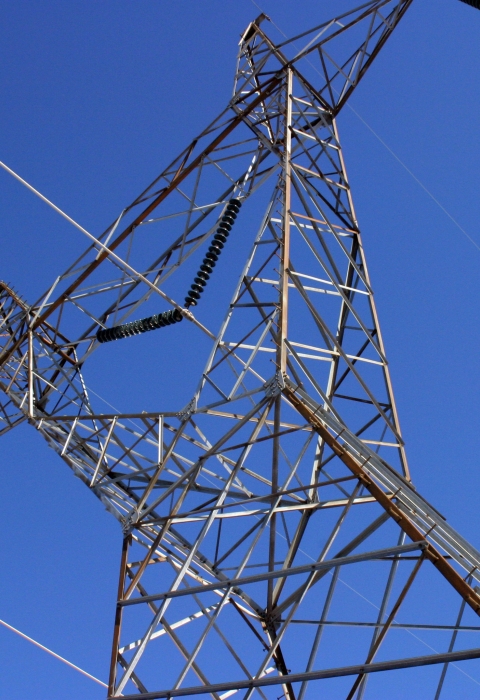In order to meet U.S. electricity demands, an estimated 7.1 million miles of above-ground distribution and transmission lines crisscross the country. Electricity delivery includes power generation at a power plant or a renewable energy source that is moved to transfer substations by transmission lines. Once at the substation, electricity is transferred to distribution lines that carry the power to the end user. As the need for electricity and power line infrastructure expands, so does the potential risk to birds.
How do power lines impact migratory birds?
Bird mortalities resulting from electric utility lines have been a long-standing bird conservation issue. Power line infrastructure kills millions of birds every year. Loss et al. (2014) estimated that 8–57 million birds die from power line collisions annually and that an additional 0.9–11.6 million birds die from electrocutions annually. Birds can be injured or killed from collisions with both distribution and transmission power lines in mid-flight. In contrast to collisions, most electrocutions occur on low-voltage distribution lines.
Why does this happen?
Large, less maneuverable waterbirds and waterfowl may collide with power lines, because they lack the ability to quickly avoid obstacles. Additionally, trailing birds in flocks may collide with power lines because they have less space to maneuver and may not be able to see obstacles until they are upon them. Raptors pursuing prey at high speeds may not be able to avoid collisions in time. Nesting near power lines can also increase the risk of collision due to the increased number of flights in the vicinity of the power lines. Night-migrating songbirds may be more susceptible to collision if poor weather conditions force them to fly lower than they normally would while migrating.
In contrast to collisions, most electrocutions occur on low-voltage distribution lines. Distribution poles were historically designed with narrow clearances between energized components, which are often not insulated.
Electrocutions occur at power line poles when a bird completes a circuit by simultaneously touching two energized parts (e.g., phase conductors) or an energized part and a grounded part.
Large raptors are more susceptible to electrocutions, because they can easily span the distance between energized or grounded components on power line poles. They also tend to perch or nest on power line structures, particularly in arid regions where there are fewer trees. Younger birds may be more vulnerable to electrocutions, because they are less experienced maneuvering around power lines. Small birds can also be electrocuted if they can access smaller spaces where energized components are more closely aligned.
Birds nesting on power line towers and poles have a greater risk of electrocutions and collisions, because nesting birds will have more flights close to power lines. Nesting material may also cause an electrical connection, or the nest material could catch on fire, killing the bird and damaging the power line structure structure
Something temporarily or permanently constructed, built, or placed; and constructed of natural or manufactured parts including, but not limited to, a building, shed, cabin, porch, bridge, walkway, stair steps, sign, landing, platform, dock, rack, fence, telecommunication device, antennae, fish cleaning table, satellite dish/mount, or well head.
Learn more about structure .
What can I do?
In the U.S., the issue of bird impacts from electric utility infrastructure, resulting from both collisions and electrocutions, gained national attention in the 1970s. Consequently, conservation agencies and electric utility companies formed the Avian Power Line Interaction Committee (APLIC) to understand the hazard and reduce the number of annual bird impacts. Solutions to this issue not only protect birds but also protect power supply reliability as electrocutions can cause power outages, damage equipment, and increase costs of operation and maintenance of the supply system.
To date, there are proven solutions to bird electrocutions on distribution poles, whereas the science of power line collisions continues to have greater uncertainty. A number of options are currently recommended and available in APLIC’s guidance documents.
Design and siting are the most effective avoidance and minimization measures to reduce bird collisions. The Service recommends siting new transmission lines outside of areas considered high risk to birds and designing or retrofitting infrastructure to be “avian-safe” in these areas. Poles can be made avian-safe through design to minimize avian electrocution risk by providing sufficient separation between phases and between phases and grounds or by covering exposed parts with insulators to physically separate electricity from birds.


